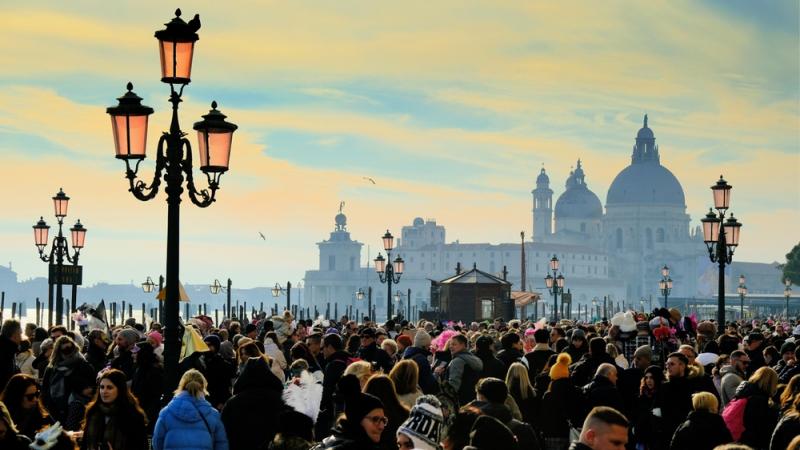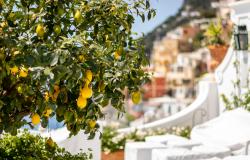Last week, in Riyadh, Saudi Arabia, the World Heritage Committee — the United Nations’ regulatory body for culture — announced it would not add Venice and its lagoon to the list of UNESCO World Heritage in Danger. (Earlier this summer, UNESCO experts had been recommending the site’s inscription, citing insufficient protective measures taken by the Italian state.)
Venice’s city administration and Italy’s government publicly exhaled in relief. Italian Culture Minister Gennaro Sangiuliano called the decision “a great victory for Italy and for common sense.”
Mayor of Venice Luigi Brugnaro even intimated that the committee’s decision was proof that the city “is not at risk.”
Many climate experts and environmental scientists beg to differ.
Flooding has worsened from climate change and the rising sea levels have caused many preservationists to sound the alarm (again). Without the city making significant adjustments to its fragile infrastructure, experts estimate Venice, which is sinking at a rate of about 2mm per year, could be underwater by the year 2031.
So, is the UNESCO news good or bad?
That depends on who you ask.
It’s worth noting that no place or monument is classified by UNESCO as under threat without first being listed as a World Heritage site. (Venice and its lagoon were added to the World Heritage List as a single entity in 1987.)
Inscription in the World Heritage in Danger list means that a site can receive immediate assistance from the World Heritage Fund. Conservation groups and the international community are also driven to quick, efficient action once a site is listed, UNESCO claims.
The list’s purpose is to spread international awareness of “conditions which threaten the very characteristics for which a property was inscribed on the World Heritage List, and to encourage corrective action.”
But some critics argue that the very existence of the first list feeds into the need for the second.
Over the past decade, both journalistic reports and academic studies have questioned the value of World Heritage Site status. While the designation confers prestige and, at its best, deepens public knowledge of cultural wonders, it also can have a hand in exacerbating issues of mass tourism. The road from World Heritage Site status to being classified as “under threat” is sometimes a short one, in other words.
UNESCO argues that inscription on the list of sites in danger is not a “sanction” but a “system established to respond to specific conservation needs.” Still, it acknowledges that many countries perceive the designation as a dishonor, as Sangiuliano’s and Brugnaro’s reactions help demonstrate.
Where does Venice go from here?
Venice’s combined Achilles heels — a delicate ecosystem, the effects of climate change, and what many say is a poorly regulated tourism economy — have only gotten more pronounced in recent years. Venetians themselves have become an “endangered species,” moving out of the city in droves, with many claiming it has become unlivable. Earlier this month, the associations Ocio and Venessia.com jointly announced that beds for tourists in the city now outnumber those for residents for the first time — 49,693 to 49,304, based on municipal data.
Venice has made strides towards solving this and other problems. In 2021, it prohibited massive cruise ships (weighing over 25,000 tonnes) from entering the fragile lagoon to sail past St. Mark’s Square and through the Giudecca canal. But enforcement of the ban has been spotty. And while mega-boats are being diverted to Marghera — an industrial zone on the mainland — it’s only a short-term solution until a new harbor and port can be built on the Adriatic Sea.
The city has also launched a €6 billion underwater barrier project designed to protect against the dreaded acqua alta and the flooding that ensues. Last year, temporary glass barriers were installed around the nearly 1,000-year-old St. Mark’s Basilica to keep water from leaking into the church and damaging its precious mosaic and marble floors.
Just last week, the city approved a long-debated entrance fee of €5 and required advance booking for day trippers ages 14 and up. The initiative will be rolled out on a trial basis during peak tourism periods in 2024. Ostensibly aimed at stemming mass tourism and raising funds for continued conservation efforts, the pilot program has nonetheless been criticized for various reasons. Some argue €5 is insufficient to deter hordes or incentivize people to stay longer; others say it’s unfair to put the onus on individual travelers.
Mayor Luigi Brugnaro, however, anticipated the criticism. After the vote, he remarked, “There’s always someone who will say [a given measure] is not enough, but then nothing is done concretely.”
If and when the pilot program is implemented — some aren’t holding their breath, as it’s been talked about for years — it will make Venice the first city to charge for entry.
Though the World Heritage Committee issued a last-minute reprieve, Venice is not out of “hot water” just yet. UNESCO says that important and urgent issues still need to be addressed and expects Italy to present a detailed plan for Venice by December 2024, to be discussed at the Committee’s 46th meeting in 2025.
Ed.: Over the next few weeks and months, Italy Magazine will be publishing “Venetian Views,” a series of articles aimed at highlighting more sustainable approaches to visiting Venice and surrounding areas. We’ll also be following what happens on the ground when the ticketing system is rolled out. Stay tuned.




















